
10 minute read
Emily Howard & Emma Zarifi - You Can't Take Yourself Too Seriously
by Ria Carruthers
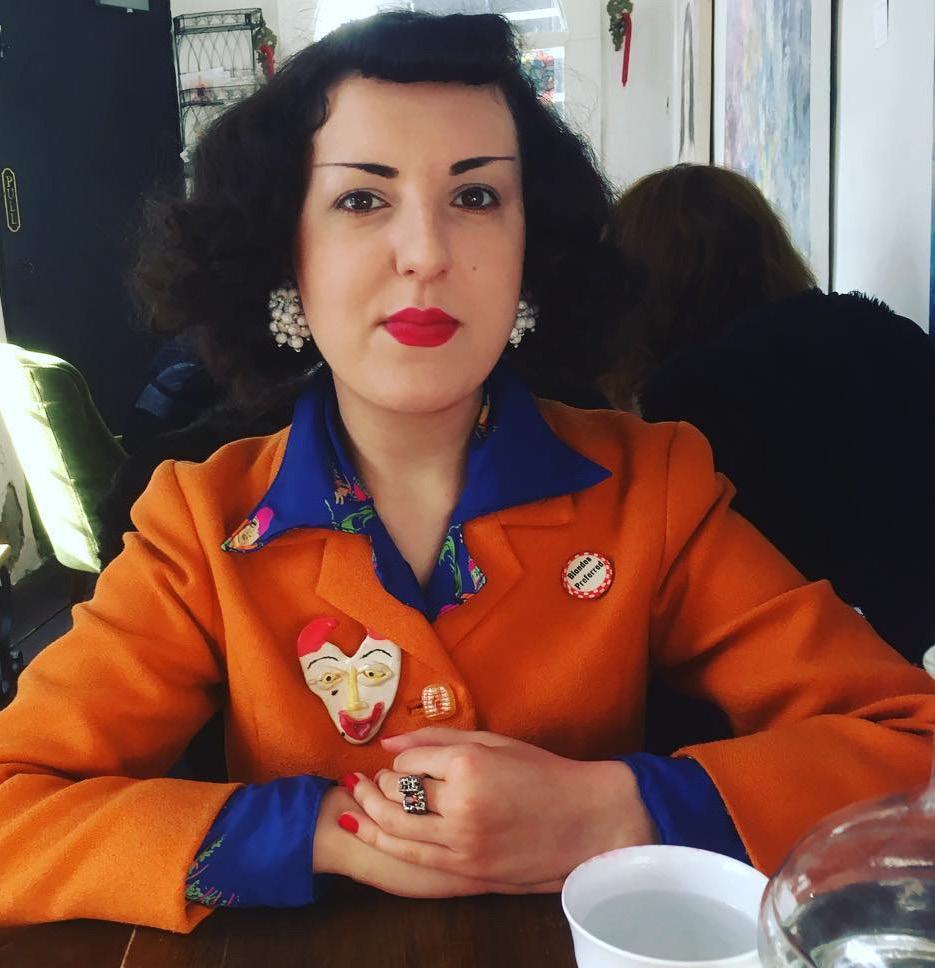
Advertisement
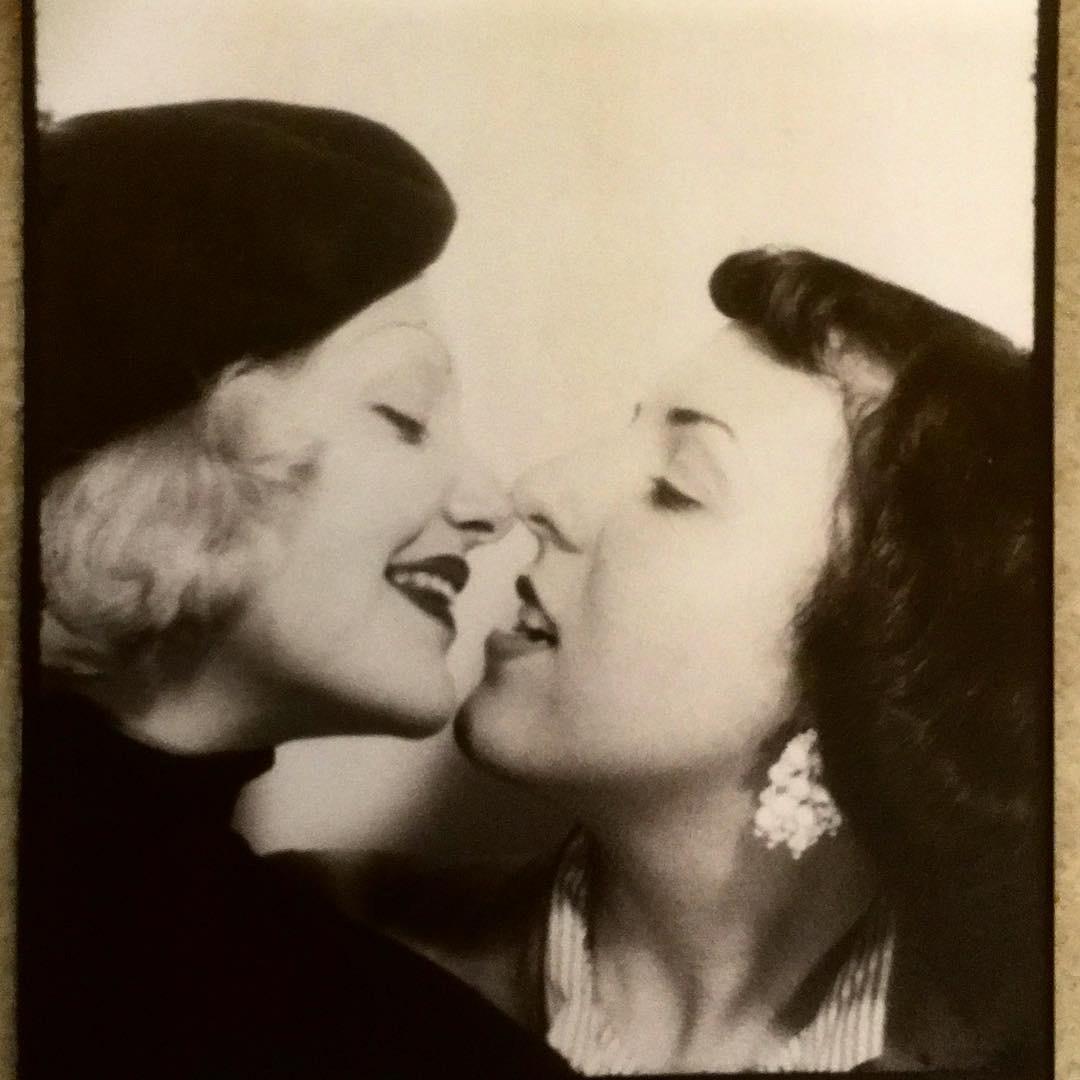




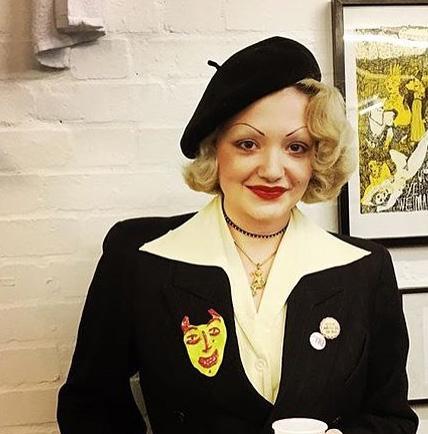

@workthatskirt @ehowardillustration
EMILY HOWARD & EMMA ZARIFI You can ' t take yourself too seriously. by Ria Carruthers

mma Zarifi and Emily Howard are a creative, independent thinking and damn stylish couple, hailing from the North-East but now based in London. I was in no doubt that they would be perfect for the first issue of The Vintage Woman, and they kindly invited me to their cosy London home for a chinwag… E
Emily - you have very well defined ‘boss’ vintage look. Tell us about your style evolution - have you always dressed in vintage, and how did you arrive at the 1930s, Marlene Dietrichinspired look we see today?
When I was growing up we didn’t have a lot of money, so I was always used to second-hand clothes. When I was about 15, I really liked the punk look - I had bright red hair shaved at the sides and big boots. When I was in college, I wore big fur coats all the time. When I moved to London, I used to wear a lot of 60s with a beehive. My taste seems to be getting earlier and earlier - now I prefer 30s and 40s. I might end up in Victorian at this rate, haha! I love the 30s sleeves, the big shoulders, the silhouette. I lost quite a bit of weight, and it suits the shape I am now. I’ve gone through lot of styles, but the common thing throughout it all is
that I’m always drawn to looks that are ‘theatrical’. I particularly love men’s tailoring in women’s wear - it’s so stylish and subversive. I get obsessed with the whole look - it needs all the elements to be right. Having said that, I don’t take my style too seriously!
Emma - what I have seen of your style is quite eclectic, a lot of 40s and 70s, but many creative looks too, perhaps inspired by your art? Would you agree with that?
Yeah, I like to wear a lot of bright colour. I do think it’s reflective of the brooches I make, which are always very colourful and ‘in your face’. I like trousers a lot and I like to emphasise my shoulders - I try to look intimidating, scary even, haha! I quite like 60s and 70s, especially 70s printed blouses, and 40s jackets. My style is very dependent on my mood - I’m more laid back than Emily with my style! I don’t really see myself as a ‘serious’ vintage girl - I wear quirky, fun accessories with most of my outfits, and of course my own handmade brooches. I’m more obsessive about collecting unusual little objects for our flat, lamps and ornaments for example. I also have a passion for vintage furniture, but our flat is too small to fit it all! And I’m also obsessed with handbags…
Emily, how do you find working in a vintage store [in Hunky Dory on Brick Lane]? Is it difficult to resist buying all the stock?
Ian and Ian have run the shop for 30 years, and they’re really sweet - so I do get some good deals, you know! I do have a one in, one out policy with vintage; it can be hard though and doesn’t always go to plan. Everything at Hunky Dory is hand curated, we try and buy as early in era as possible until about the 70s. It’s 50/50 men’s and women’s wear, and it’s all about the design. We get a lot of Italian deadstock, French 40s and 50s jackets, and the stock is generally European rather than American. We’re on Brick Lane, and we try and keep things affordable. It’s great working there because we have people come in that I’d never have the opportunity to talk to usually, such as Kat from EastEnders, and a Japanese girl who told me that, apparently, I am famous in Japan!
You both have some rare and beautiful vintage pieces – I’m jealous! Could you describe some of your favourite vintage pieces?
Emily – I have an amazing 1930s leather trench that I found in Glencheck Vintage in Berlin. It was one of those that I didn’t want to try on because it was quite an investment, but of course I did, and I
knew I had to have it! I also have an incredible 1940s CC41 full tweed riding suit with serious shoulders – I’m not sure where I’ll wear it, but it is amazing! “I think the way you dress reflects how you are responding to the world at the time.”

Emma – I have a 1940s pyjama two-piece that I only wear on special occasions – it's cream, with a brown stripe running through it. It was really cheap actually, because there was a big stain across it, but Emily managed to get it out. I’m really after another 40s pantsuit - I have an image in my mind of what it looks like, but I haven’t found it yet!!
The theme of this issue – is ‘like a boss’. Are there any particular ‘boss’ women who have inspired you?
Emily – I have a lot of a loud, domineering women in my family - but my nanna is the matriarch. And unlike a lot of my family, she’s quiet – but she doesn’t take any crap. She’s always worked hard, and she went to college at the age of 60. She has a zest for life, which is really important, and she loves
When I first saw her when I was about 16, she had a tuxedo on and was kissing a woman. I just thought ‘she’s amazing’ - I didn’t know if I wanted to be her, or be the woman she was kissing! For me, she just had this magic ‘air’ about her, not masculine or feminine, but all things at the same time – an ‘other’. She was charming, charismatic, smart, crisp, and in her personal life she was a really strong woman.
Emma - I’d say just a lot of my friends in real life, who have come from nothing and are doing so well for themselves, standing for what they believe in – it’s so inspiring. Although Emily has been the biggest inspiration in my life!
Emily - I think women being nice to each other and supporting one another is one of the most ‘boss’ things we can do. When women call themselves ‘feminists’ but then bitch about other women or cut them down if they find them intimidating or competition – I hate that, it happens a lot.
You are both artists – Emma, a jewellery maker, and Emily, an illustrator. Where do both find the inspiration for your art?
Emma – I just love making things…I never really knew what I wanted to do, but since I’ve been making the brooches, I think I’d like to make wooden toys or puppets for a living. What I'm inspired by changes a lot, so I don’t know what will
up in Barcelona. I wouldn’t say they are ‘pretty’ – they are much more theatrical and characterful. I started to make them because I wanted to wear brooches but didn’t want to spend a lot of money, and I wanted something…well….not ugly, but not soft or pretty - it’s not me. They’re mostly faces, or occasionally eyes or other objects like swords. I always wear a brooch, and it really finishes off an outfit.
Emily – I’m an illustrator, and a lot of my work is influenced by the German artists Otto Dix and George Groz - I’m really interested in how things are organised in space, and the perspective. I’ve done a lot of posters for events. I like to create scenes, and then fill those scenes with characters - often people I’ve met. My illustrations are quite decadent, exaggerated and grotesque, and like Emma, I like things to look quite characterful - ugly - but still glamorous. I think that might be influenced by being from up North – there are a lot of characters up there. They’re all very glamorous, but also quite grotesque.

Have your experiences with growing up and coming out as lesbian influenced your style choices?
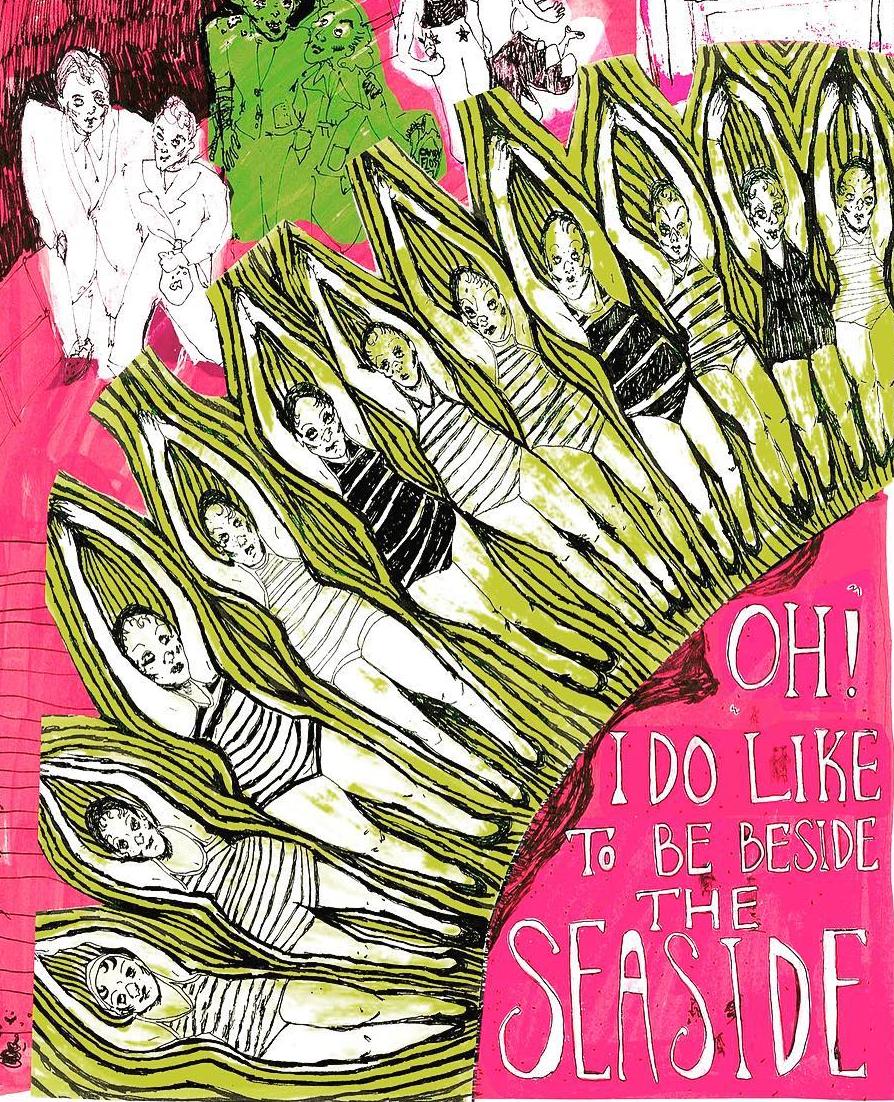
Emma - When I was younger I wore a lot of dresses and heels, and then when I came out I tried to fit in more with ‘being gay’, by wearing jeans and a t-shirt, shaving my head and having piercings. I started getting into vintage because it fits better, and because I was becoming more mature and it’s a bit smarter. And it helps with Emily working at Hunky Dory and getting discounts! In London, you meet a lot of different interesting people and I’m inspired by many of them. I think it’s quite important to change your style often.
Emily – I think the way you dress reflects how you are responding to the world at the time. When I came out at the age of 14, I did try and look a bit more like people on the scene to find my way, but then I realised it wasn’t me.
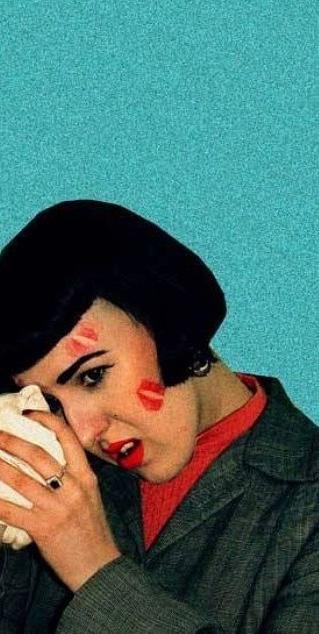
Iranian music, especially in the 70s, was so great. I love Googoosh – who was an Iranian pop artist in the 1970s. She was definitely a boss lady, being a pop singer at a time when it wasn’t acceptable for women. I’m also influenced by the classic Iranian makeup of the 60s and 70s - the sharp eyebrows and dark eyes. The old classic Iranian women were very beautiful. Then there’s the culture and how people come together - they’re quite positive people generally. Also, the food is amazing. I’m definitely not so keen on the men! It has been really nice to meet some Iranian gay women in London – I hadn’t really ever met any before.
Emma – Yes, you do have to be able to laugh at yourself!
I think I’d be right in saying you two have quite an attachment to Berlin – what is it about the city that draws you in so much?
Emma – Everyone leaves you alone, ha! No, there’s so many great art galleries and museums there. And it’s very gay friendly.
Emily - my favourite period of time is Berlin in the 1920s and 30s - the Weimar period, which was characterised by art, culture, and decadence. That’s the most interesting period in history for me. I sort of had it in my head that I would to go to Berlin and it would be like that… haha, I of course knew it wouldn’t be. But it does have a real energy, a buzz - everything’s a bit underground and stuff. There is the Kinomuseum, which has a lot of Marlene Dietrich’s clothes and the banknotes from Metropolis, and a lot of the experimental film memorabilia.
Emily - A couple of years back we organised a Pre-revolution Persian night called Azizam (a term of endearment in Farsi) that ended with Emma draped in the Iranian flag cradling her wig that had just flew off into a candle. It was great.
Do you think the vintage community does enough to support the LGBTQI+ community?
Emily - I wouldn’t say we are part of the vintage community, but we’ve had some not so great experiences at vintage events, being made to feel quite uncomfortable at times. Some members of the vintage community can have traditional values, which is fine, but let’s leave the misogyny and homophobia to one side! Sometimes it feels like we’re from another world to them. I actually put on my own events in London – these combine the queer community and the vintage scene. If you can’t find something for you, put it on yourself!
Emma – I think it’s more a people problem in general rather than a problem with the vintage scene, but I find that some vintage women can tend to be a bit unwelcoming.

The architecture in Berlin is great – the buildings are big and brutal - horrible looking, but brilliant. Glencheck Berlin is an incredible vintage shop - Constance and Harald have been running it for about 30 years, and it’s mostly 30s, 40s and 50s. It’s immaculate, and the hats are insane. Constance is great because if something doesn’t suit you - she’ll swipe it away, and she’ll ‘get’ your style quite quickly, I’ve noticed.









